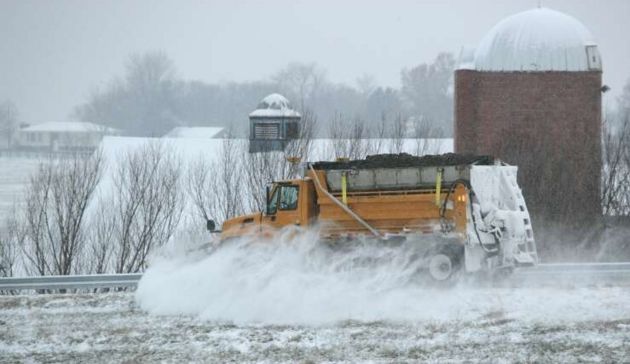Category:133 Snow and Ice Control

This article is to be used by Maintenance and other MoDOT personnel to execute daily assignments and deal with external customers. Materials and equipment used in snow and ice control are addressed in this article. Districts may use any safety sensitive personnel designated by the district engineer in emergency situations and as indicated by the particular emergency. Snow and ice control operations as well as the Operator’s Guide for Anti-Icing are included in this article.
| Snow Plowing Practices |
| Summary 2009 |
| See also: Innovation Library |
| Related Information |
| Incident Response Plan and Emergency Response Management |
| MoDOT Snow Academy Official Guide, Participant's Manual and Snow Academy Website |
Anti-Icing
Anti-icing is the snow and ice control practice of preventing snow or ice from bonding to the pavement. Anti-icing forms the basis of MoDOT's snow and ice control program. De-icing will be practiced if and when weather conditions render anti-icing activities ineffective.
- Reason for policy: National research shows anti-icing to be the most cost effective snow and ice control program.
- Effective Date: 6/1/99
- Revision Dates: 6/17/03
Operational Closure
In the event a storm reaches an intensity that the continuation of operations would prove ineffective or would pose an undue safety risk for MoDOT personnel and/or the traveling public, snow and ice control activities should be shut down until weather conditions have improved. The district engineer or designee is responsible for making a closure decision. The MoDOT Emergency Operation Center (EOC) is to be notified of any such closure decision.
- Reason for policy: Reserve department resources for when they can be used more effectively
- Effective Date: 6/1/99
- Revision Dates: 6/17/03, 10/14/05
Intent

Snow and ice control operations should begin as soon as weather conditions warrant and continue on a 24-hour per day basis until all major highways and, at the district engineer’s discretion, high volume minor highways are returned to a clear condition and all remaining minor highways are open to two-way traffic. Refer to 133.4 Snow and Ice Control Operations.
- Reasons for policy: Meet customer needs and set statewide performance standards.
- Effective Date: 6/1/99
- Revision Dates: 6/17/03. 10/14/05, 12/01/06, 8/16/07
Winter Operations Communication Plan
Communication is critical to enhancing situational awareness during winter weather events. Communication between maintenance buildings, maintenance areas, districts and the central office is necessary to understand where the greatest needs are for resources during any particular event, but more so during major winter storms that affect a good portion of the state. Each district shall have a communication plan in place to disseminate information between the buildings, areas and district office.
The following guidelines shall be used to facilitate communication between districts and between districts and the central office before and during winter events.
- As storms begin in a district, that district shall contact the neighboring district in the direction that the storm is moving to inform them of the timing and intensity of the storm.
- Contact with neighboring districts after normal working hours, prior to the other district activating their EOC, can be made using the snowstorm contacts and phone numbers. Refer to http://wwwi/intranet/tr/emerg_response.htm for links to the Emergency Contact List, which is part of the Incident Response Plan.
- During a storm, contact can be made using the other district’s Emergency Operation Center (EOC) phone number or by contacting the neighboring Maintenance personnel directly.
- Each Maintenance manager (from Maintenance Supervisor on up) shall have a list of cell phone numbers and radio call numbers for all surrounding Maintenance managers, including those in neighboring districts, to coordinate continuity of route treatments between areas and districts.
- Each Maintenance manager whose area borders other states shall have a contact list for their counterparts in those bordering states to share storm information and, if possible, coordinate continuity of route treatments.
- Each district shall call the central office EOC phone number to announce activation and deactivation of the district EOC, and to notify the central office EOC of any incidents with statewide significance.
- Central office EOC will send updates to appropriate email distribution list(s) with district EOC activation/deactivation information, as well as any major incident information.
- Conference calls will be scheduled for all districts and the Central Office EOC at times designated by the Director of System Management, State Maintenance Engineer and/or State Traffic Engineer.
Articles in "133 Snow and Ice Control"
The following 5 pages are in this category, out of 5 total.